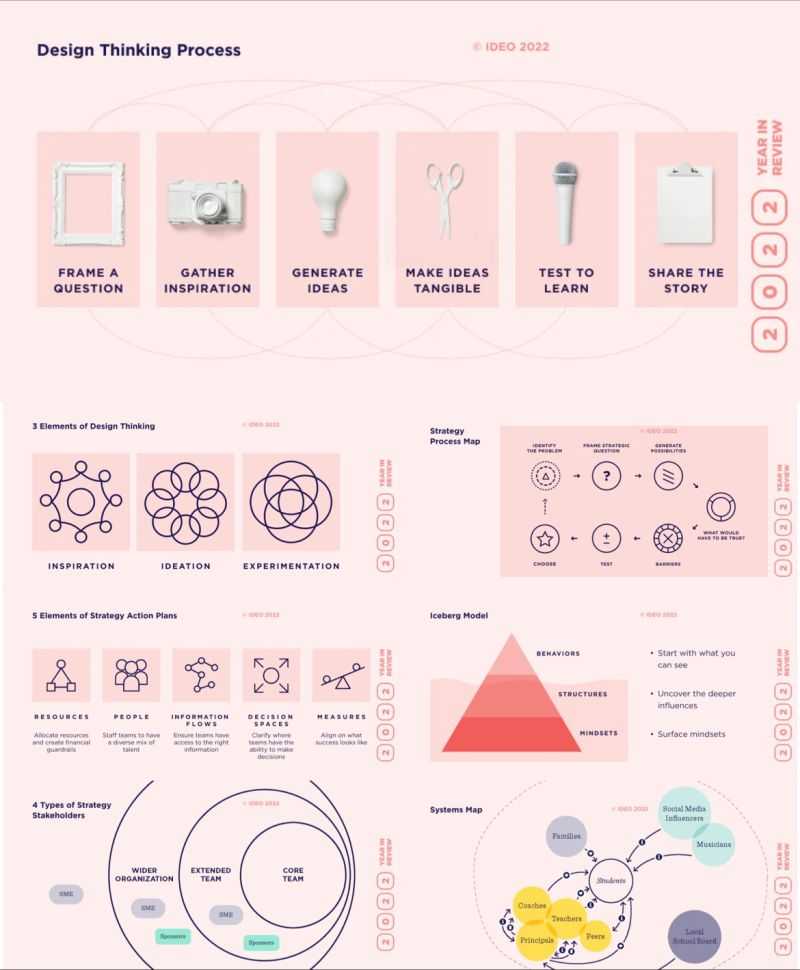I. Design Thinking Process
Design thinking is a human-centered approach to innovation that starts with what is desirable from a human point of view, along with what is technologically feasible
Phases:
- Frame a question
- Gather inspiration
- Generate ideas
- Make ideas tangible
- Test to learn
- Share the story
II. Elements of Design Thinking
Mindsets:
- Inspiration: Connecting with people to understand their needs
- Ideation: Creative thinking and diverging to generate ideas
- Experimentation: Prototyping, making tangible, and iterating
III. Strategy Process Map
The strategy process map guides you through the process of creating a winning strategy and helps you avoid getting lost in ambiguity and complexity
Steps:
- Identify the problem
- Frame a strategic question
- Generate possibilities
- Think about what would have to be true
- Understand barriers
- Conduct tests
- Choose a strategic direction
IV. Strategy Stakeholders
When activating strategy, it’s important to collaborate effectively with different stakeholders.
Questions:
- Who are the players that need to be involved?
- What role do they need to play?
Categories:
- Core Team: Does the work of strategy
- Extended Team: Are critical to bringing the strategy to life
- Subject Matter Experts: Hold expertise needed to build, test, or activate the strategy
- Sponsors: Must approve the strategy, and their support is important to its success
V. Elements of Strategy Action Plans
Key elements:
- Resources: Allocate resources and create financial guardrails
- People: Staff teams to have a diverse mix of talent
- Information Flows: Leverage internal communications infrastructure to ensure teams have access to the right information
- Decision Spaces: Clarify where teams have (or do not have) the ability to make decisions
- Measures: Align on what success looks like in the short, medium, and long term
VI. Iceberg Model
In a complex system, solving problems requires considering the whole picture and surfacing the root of the problem.
The iceberg model is a framework for uncovering the layers of a system. It helps you:
- Look for patterns over time, starting with what you see
- Uncover deeper structural influences
- Surface underlying mindsets
VII. Systems Map
Mapping systems can help you spot opportunities for growth and change
Steps:
- Write down every stakeholder in your system on a blank piece of paper. Push yourself to think past the obvious.
- Draw arrows between the different parts of your system to identify how they’re connected.
- Reflect on what specific areas you want to examine more closely. What questions come up for you? What gaps do you see?
